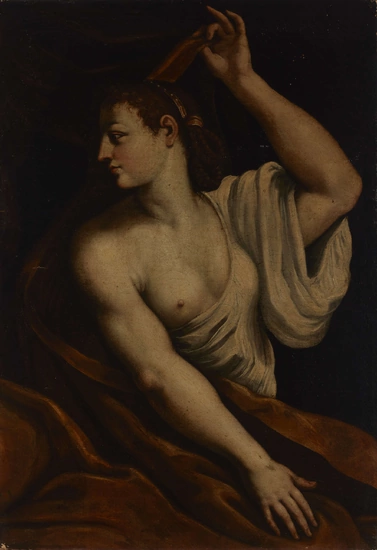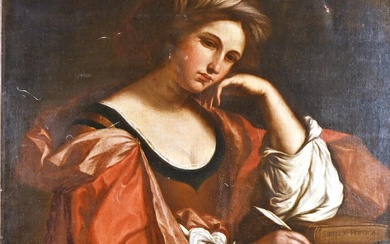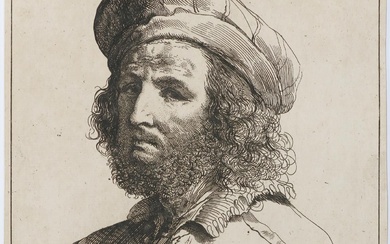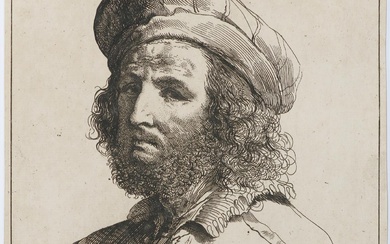After Giovanni Francesco Barbieri, called Il Guercino, Italian 1591-1666- Semele;...
After Giovanni Francesco Barbieri, called Il Guercino,
Italian 1591-1666-
Semele;
oil on canvas, 108 x 75 cm., (unframed).
Provenance:
Private Collection.
Note:
The present work relates to a larger composition by Guercino and Workshop which includes the figure of Jupiter alongside Semele, and which sold at Dorotheum, Vienna, 20 October 2015, lot 258. Two drawings by Guercino made around this time also relate to his invention. One is a pen study, a 'primo pensiero' for the whole composition, in the Royal Library, Windsor Castle [RCIN 902758]; and the other, a chalk study for the figure of Semele, in the Albertina, Vienna [no.2395]. The Vienna painting was engraved by Giovanni Battista Pasqualini (1595-1631), published in 1626, and presented in reverse. The present work, which looks to date to the late 17th century, echoes the format of the engraving, which is surely its inspiration (rather than Guercino's original canvas).
The story of Jupiter and Semele is told in Ovid's 'Metamorphoses'. The god Jupiter takes the mortal woman Semele as his mistress and makes her pregnant. When Jupiter's wife, the goddess Juno, finds out, she disguises herself and suggests to Semele that her lover may not really be Jupiter. She tells Semele to ask Jupiter to come to her in the same form he has when he visits Juno. Jupiter arrives therefore as a mighty thunderbolt armed with fire, and Semele is burned to ashes. In the present work, Semele is shown sitting in her bed, at the very moment when Jupiter arrives.
View it on
Sale price
Estimate
Time, Location
Auction House
After Giovanni Francesco Barbieri, called Il Guercino,
Italian 1591-1666-
Semele;
oil on canvas, 108 x 75 cm., (unframed).
Provenance:
Private Collection.
Note:
The present work relates to a larger composition by Guercino and Workshop which includes the figure of Jupiter alongside Semele, and which sold at Dorotheum, Vienna, 20 October 2015, lot 258. Two drawings by Guercino made around this time also relate to his invention. One is a pen study, a 'primo pensiero' for the whole composition, in the Royal Library, Windsor Castle [RCIN 902758]; and the other, a chalk study for the figure of Semele, in the Albertina, Vienna [no.2395]. The Vienna painting was engraved by Giovanni Battista Pasqualini (1595-1631), published in 1626, and presented in reverse. The present work, which looks to date to the late 17th century, echoes the format of the engraving, which is surely its inspiration (rather than Guercino's original canvas).
The story of Jupiter and Semele is told in Ovid's 'Metamorphoses'. The god Jupiter takes the mortal woman Semele as his mistress and makes her pregnant. When Jupiter's wife, the goddess Juno, finds out, she disguises herself and suggests to Semele that her lover may not really be Jupiter. She tells Semele to ask Jupiter to come to her in the same form he has when he visits Juno. Jupiter arrives therefore as a mighty thunderbolt armed with fire, and Semele is burned to ashes. In the present work, Semele is shown sitting in her bed, at the very moment when Jupiter arrives.






